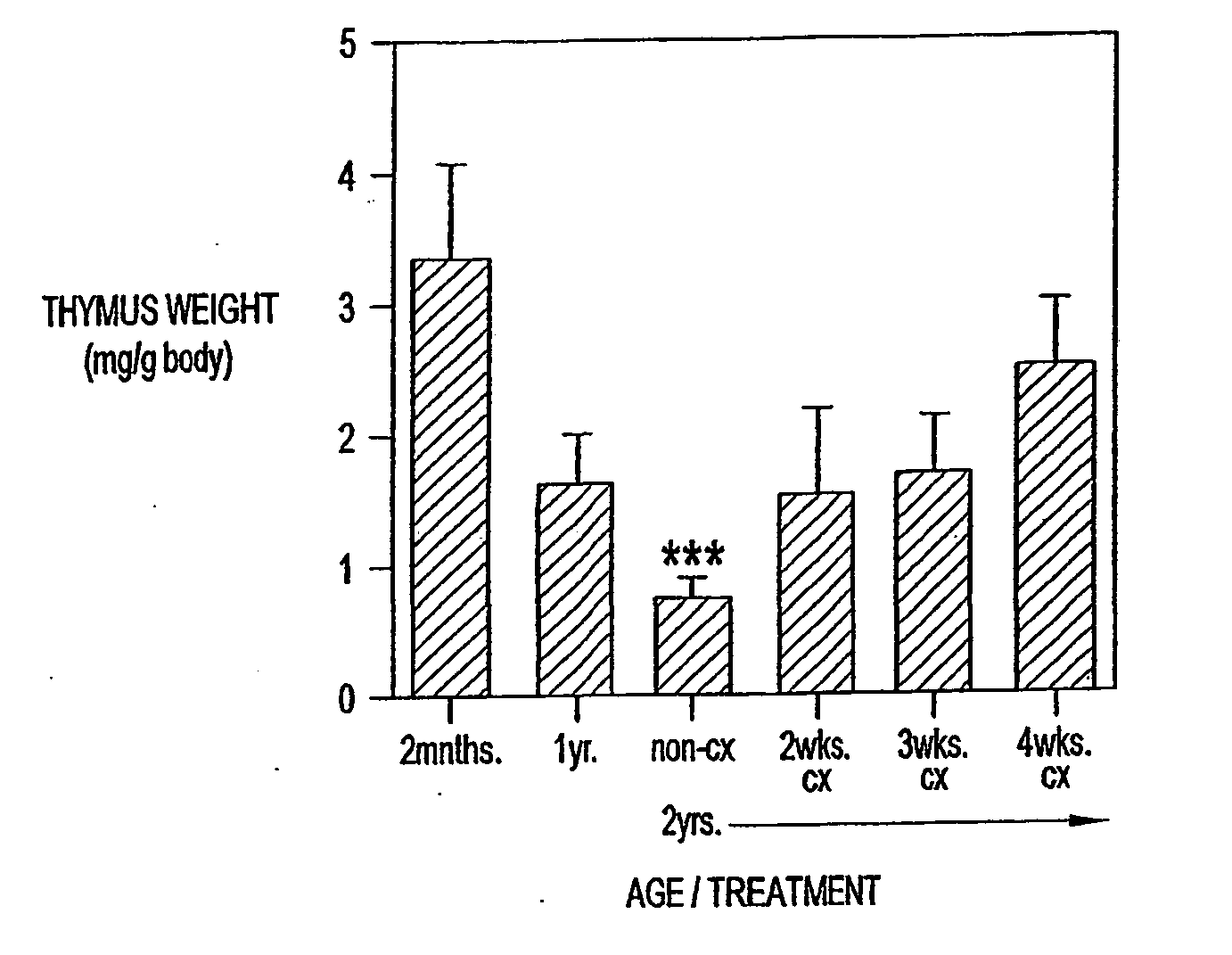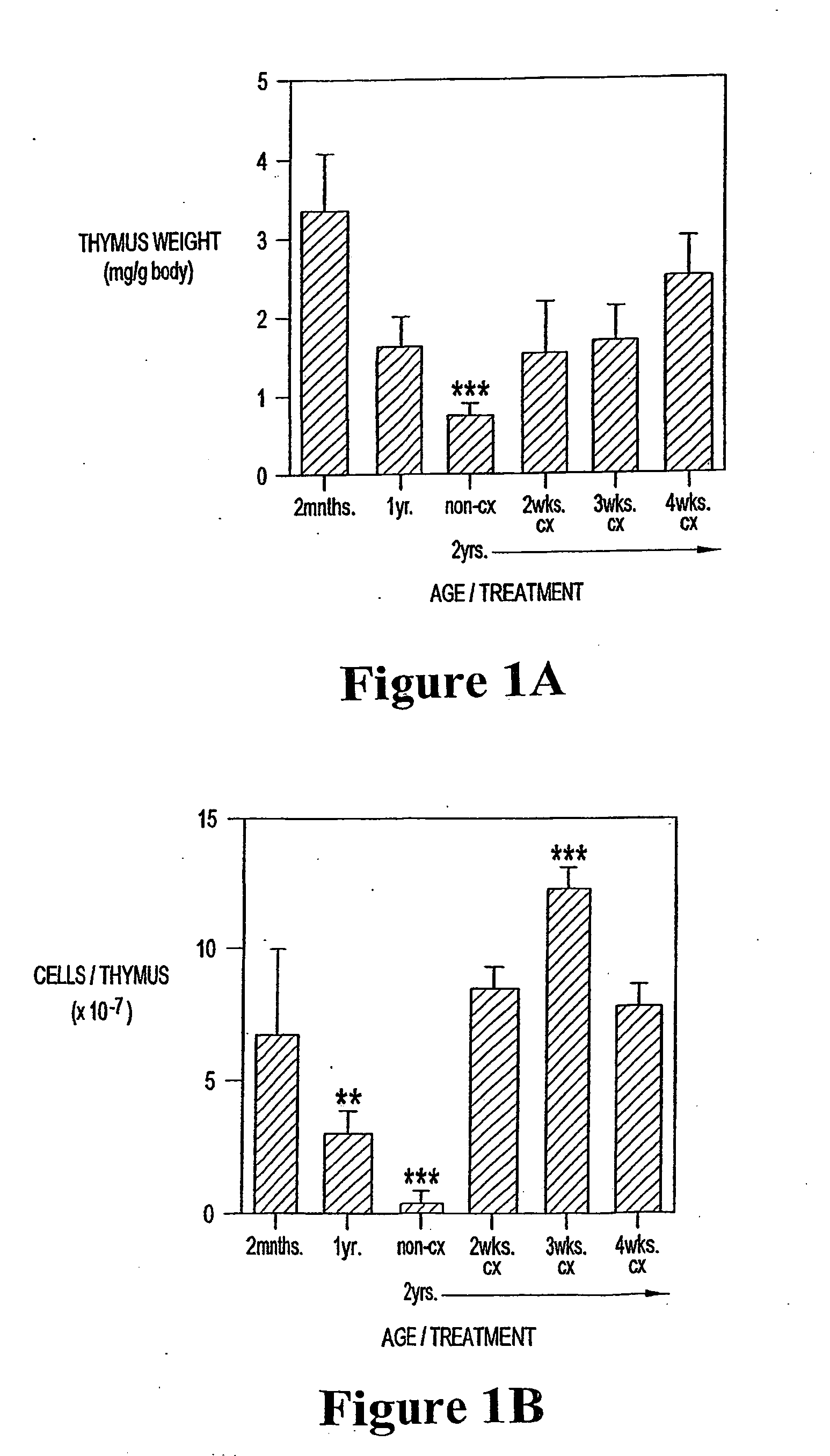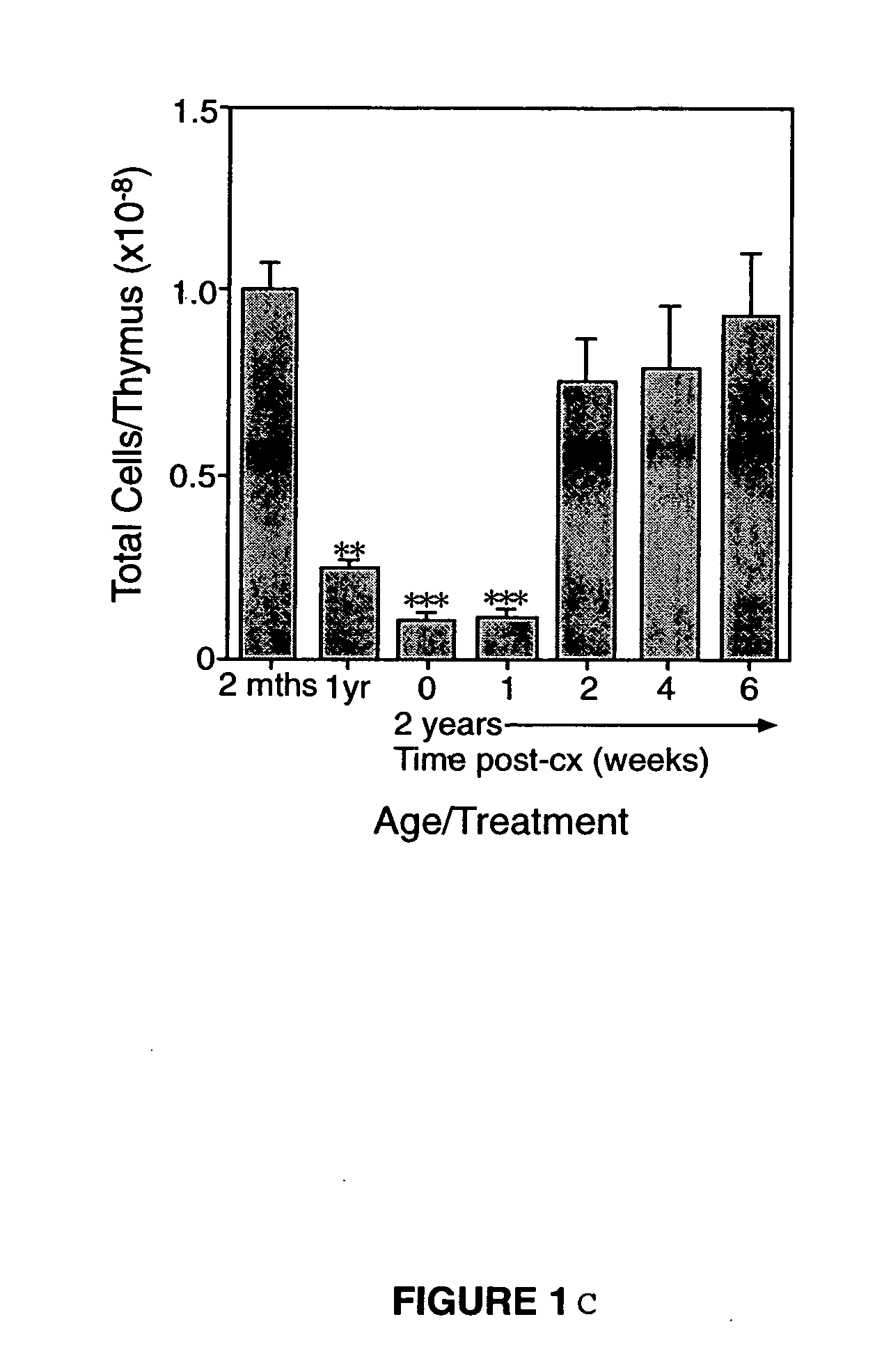Diagnostic indicator of thymic function
a thymic function and diagnostic indicator technology, applied in the field of immunology, can solve the problems of early receipt of late-stage maturation signals of developing t cells, high risk of disease, and high risk of patients being harmed by diseas
- Summary
- Abstract
- Description
- Claims
- Application Information
AI Technical Summary
Benefits of technology
Problems solved by technology
Method used
Image
Examples
example 1
Reversal of Aged-Induced Thymic Atrophy
[0179] Materials and Methods
[0180] Animals. CBA / CAH and C57Bl6 / J male mice were obtained from Central Animal Services, Monash University and were housed under conventional conditions. C57Bl6 / J Ly5.1+ were obtained from the Central Animal Services Monash University, the Walterand Eliza Hall Institute for Medical research (Parkville Vicotoria) and the A.R.C. (Perth Western Australia) and were housed under conventional conditions._Ages ranged from 4-6 weeks to 26 months of age and are indicated where relevant.
[0181] Surgical castration. Animals were anesthetized by intraperitoneal injection of 0.3 ml of 0.3 mg xylazine (Rompun; Bayer Australia Ltd., Botany NSW, Australia) and 1.5 mg ketamine hydrochloride (Ketalar; Parke-Davis, Caringbah, NSW, Australia) in saline. Surgical castration was performed by a scrotal incision, revealing the testes, which were tied with suture and then removed along with surrounding fatty tissue. The wound was closed ...
example 2
Reversal of Chemotherapy—or Radiation—Induced Thymic Atrophy
[0228] Materials and methods were as described in Example 1. In addition, the following methods were used.
[0229] Bone Marrow reconstitution. Recipient mice (3-4 month-old C57BL6 / J) were subjected to 5.5Gy irradiation twice over a 3-hour interval. One hour following the second irradiation dose, mice were injected intravenously with 5×106 donor bone marrow cells. Bone marrow cells were obtained by passing RPMI-1640 media through the tibias and femurs of donor (2-month old congenic C57BL6 / J Ly5.1+) mice, and then harvesting the cells collected in the media.
[0230] T Cell Depletion Using Cyclophosphamide
[0231] Old mice (e.g., 2 years old) were injected with cyclophosphamide (200 mg / kg body wt) and castrated on the same day.
[0232] HSV-1 immunization. Following anesthetic, mice were injected in the foot-hock with 4×105 plaque forming units (pfu) of HSV-1 in sterile PBS. Analysis of the draining (popliteal) lymph nodes was per...
example 3
Thymic Regeneration Following Inhibition of Sex Steroids Results in Restoration of Deficient Peripheral T Cell Function
[0245] Materials and methods were as described in Examples 1 and 2.
[0246] To determine the functional consequences of thymus regeneration (e.g., whether castration can enhance the immune response, Herpes Simplex Virus (HSV) immunization was examined as it allows the study of disease progression and role of CTL (cytotoxic) T cells. Castrated mice were found to have a qualitatively and quantitatively improved responsiveness to the virus.
[0247] Mice were immunized in the footpad and the popliteal (draining) lymph node analyzed at D5 post-immunization. In addition, the footpad was removed and homogenized to determine the virus titer at particular time-points throughout the experiment. The regional (popliteal) lymph node response to HSV-1 infection (FIGS. 14-19) was examined.
[0248] A significant decrease in lymph node cellularity was observed with age (FIGS. 14A, 14B...
PUM
| Property | Measurement | Unit |
|---|---|---|
| Time | aaaaa | aaaaa |
| Time | aaaaa | aaaaa |
| Time | aaaaa | aaaaa |
Abstract
Description
Claims
Application Information
 Login to View More
Login to View More - R&D
- Intellectual Property
- Life Sciences
- Materials
- Tech Scout
- Unparalleled Data Quality
- Higher Quality Content
- 60% Fewer Hallucinations
Browse by: Latest US Patents, China's latest patents, Technical Efficacy Thesaurus, Application Domain, Technology Topic, Popular Technical Reports.
© 2025 PatSnap. All rights reserved.Legal|Privacy policy|Modern Slavery Act Transparency Statement|Sitemap|About US| Contact US: help@patsnap.com



